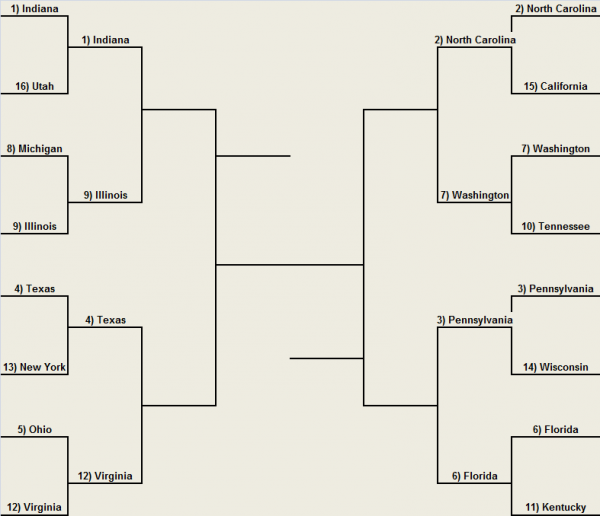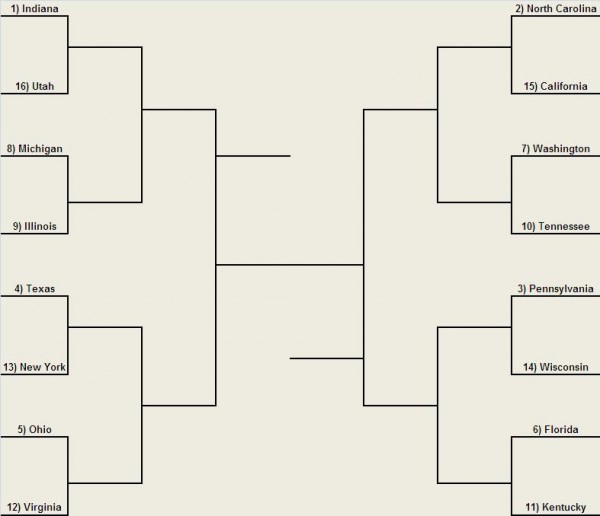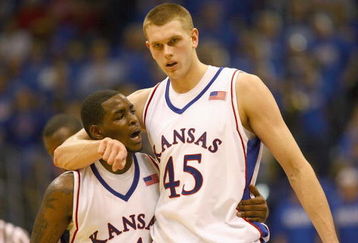
Dave Zeitlin is the RTC correspondent for the Ivy League.
At Large….At Last?
Following the Sports Illustrated story profiling Tommy Amaker and Harvard hoops, and with Cornell breaking into the Top 25, the intro this week was going to be all about the suggestion that the Ivy League could possibly receive (gasp!) an at-large bid to the NCAA tournament. The last time that happened was, well, never.Then Coach Amaker’s team did what most of his teams (Seton Hall and Michigan) have done previously — crashed and burned at the most inopportune time. An 86-50 thrashing at the hands of the Big Red was followed by a detrimental loss to Princeton. So much for the at-large conversation, right? Wrong! Traditional one-bid mid-major conferences have a simple formula for getting a second team into the tournament: have the nationally known and ranked team get knocked off during the conference tournament – i.e. Butler (Horizon League), Gonzaga (West Coast Conference) even Siena (MAAC) – allowing the eventual conference tourney champ to get the bid. But wait, all you Ivy-savvy fans say, our conference doesn’t have a tournament. So RTC presents the formula to you: Princeton (undefeated in conference) splits with Cornell and both win the rest of their games (not impossible) forcing a playoff as both teams would finish conference play at 13-1. Princeton wins the playoff and gets the automatic bid and the Big Red gets an at-large, as ESPN shows the jubilation in Ithaca when Donahue and company see their name announced. This sets up an eventual rematch with Kansas at the Final Four. And to think the dream seemed so real.
The Gang(s) That Couldn’t Shoot Straight
Rick Pitino’s mantra has always been shoot the three, defend the three and I’ll see you at the Big Dance. It has worked for him at all four of his college coaching stops (BU, PC, Kentucky, and Louisville). The way the game is played these days, the emphasis on success from beyond the arc has never been greater even with the line being moved back. Let’s look at how the “three for the money theory” has played out during the first two full weekends of Ivy play. Over the course of those 16 games, the losing teams shot a combined 67-255 or 26% from 3-point range. Columbia and Dartmouth each had a 1-for-11 game vs. Harvard and Cornell respectively, while Penn shot an unparalleled 1-for-18 vs. Yale. The winners shot an aggregate 111-for-281 or 39.5%. Not surprisingly, Cornell led the way with an 11-for-27 clip vs. Dartmouth, 12-for-27 vs. Harvard, and 13-for-27 vs. Yale, proving they are a bunch of equal opportunity shooters. Broken down by game, the losers are averaging about 4-16 while the winners approximately 7-17, a difference of 9 points per game. Now, if only I had some eligibility left…..
One third of the way through the conference season, here is how RTC sees the Ivy League:
1. Cornell (6-0, 20-3): SRO in the locker room after games as Coach Steve Donahue has used an average of almost 16 players per game (19 vs. Dartmouth). Only Ivy coaches could remember that many names. The four victories have come by an average of more than 25 pts per game. After a tune-up at the Palestra against Penn tonight, the nationally ranked Big Red face Princeton on Saturday before a rematch with Harvard the following Friday – both on the road.
2. Princeton (4-0, 13-5): Their undefeated conference record has earned the Tigers the No. 2 spot in our bi-weekly power poll. More amazingly, the four victories have all come on the road – leaving only three games remaining away from home. Once again, defense has been the trademark with the Tigers allowing a mere 45 points per game in those wins. Jadwin Gym should be rocking this Valentine’s Eve (Ted officiating?) as Cornell comes calling.
3. Harvard (4-2, 15-5): Leapfrogged by Princeton thanks to a head-to head loss and the aforementioned disappointing performance vs. Cornell. We are guessing that they will be much better prepared for both rematches and at least one of the losses (most likely vs. Princeton) to be avenged. This team is too talented led by likely Ivy Player of the Year Jeremy Lin (17 points, four rebounds, and four assists per game) and the highly touted freshman class.
4. Yale (3-3, 9-14): One of two teams with a .500 record in conference completes the top half of the rankings. A home loss to Brown has been the only puzzling result and this Friday’s battle with traditional foe Harvard (a 29-29 tie perhaps?) should be the talk of New Haven. Alex Zampier’s 17.5 pts per game paces the Elis.
5. Penn (2-2, 3-15): The other team with a .500 record jumps two spots because as we know, it is the all-important loss column that counts. The ship appears to be somewhat righted thanks to the return to Ivy competition, the shortening of the bench by Jerome Allen, and the emergence of Dan Monckton as a complement to Zack Rosen. The junior has averaged over 11 pts over the last four games, including a controversial buzzer-beating tip-in vs. Brown.
6. Columbia (2-4, 8-12): Is Joe Jones headed for his fifth consecutive 7-7 Ivy season? To do so the Lions will have to overcome the injury bug that has plagued them, particularly to senior guard Patrick Foley, and an upcoming four-game road trip that includes stops at Princeton and Harvard. Columbia continues to be near the top of NCAA in 3-point shooting efficiency led by the marksmanship of Noruwa Agho (51.6%).
7. Brown (1-5, 7-16): The only thing keeping the Bears out of the cellar is Dartmouth. Five consecutive losses, albeit competitive ones, followed a promising conference- opening victory at Yale. Superman Matt Mullery leads the team in ppg (15.3), rebounds (6.0) assists (3.0), field goal percentage (55.3) and blocks (1.5).
8. Dartmouth (0-6, 4-16): After a close home loss to Harvard (in which they actually led in the second half) things have fallen apart for the Big Green. Their next four losses have been by an average of 16 points and their offense could not produce more than 51 points in any game. Coach Mark Graupe continues to look for a productive combination as no player is averaging more than 27 minutes or eight points per game. This Friday’s game vs. Brown could be the first of two basement battles.





















































